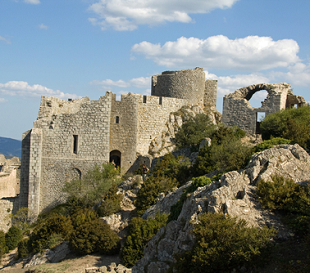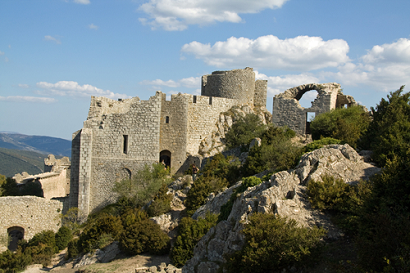
The Cathar castles of the French Pyrenees
Many centuries ago there was a religious organisation known as the Cathars. Their stronghold was in southern France and in many ways the Cathars bear similarities with the present day Amish Society in the United States of America.
The Cathars rejected many material things and attempted to live as pure a life as they could, although their beliefs were often at loggerheads with the Roman Catholic Church.
Murdered and mutilated by Simon de Montfort and his “holy crusade”, neither women nor children escaped the barbarity, which was exploded upon the Cathars by the Pope himself. In one massacre in the French town of Beziers in 1207, it is said that De Montfort and his men killed 7,000 Cathars.
Although the centuries have passed and the Cathars are now a distant memory, reminded emphatically by the many spectacular and intriguing Cathar castles are left dotted all over the Pyrenees for modern day tourists to enjoy.
If you only ever get a chance to see one Cathar castle then make sure that it is the exceptionally spectacular Chateau de Peyrepertuse in the quiet and preserved village of Corbiers between the Pyrenees and the shores of the Mediterranean. The fortress is referred to as the ‘kingdom of France’ and culminates at an altitude of 800 metres and as you can probably image, the views from the Chateau de Peyrepertuse cannot be overstated.
Other particularly inspiring Cathar castles to definitely make a detour to visit if you are in this region of France is Puilaurens, which stands high upon a mound of rock above the Boulzane Valley in the commune of Lapradell-Pailaurens and the most westernmost Cathar castle.
The Chateau de Queribus is another ‘must-see’ Cathar castle. Situated to the north of Quillan this ruined castle is spectacularly positioned high above the Grau de Maury pass and has been listed as a ‘monument historique’ by the French Mnistry of Culture since 1907.
Visiting the Cathar castles of the Pyrenees gives tourists an opportunity to see the Pyrenees and surrounding French countryside in depth and at the same time study the fortifications which protected the lives of the practitioners of a harmless religion from the 12th to the 14th centuries.



